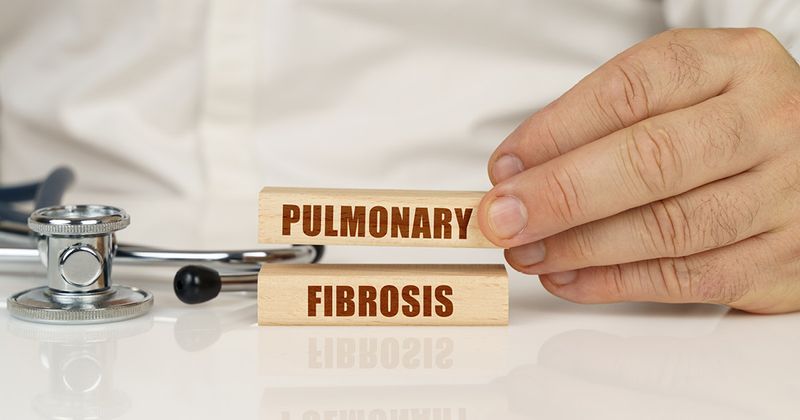Patients with IPF experience similar 48-week FVC declines with pamrevlumab, placebo
Key takeaways:
- Studies set to assess pamrevlumab in IPF have been cancelled.
- A similar proportion of patients in the pamrevlumab group and the placebo group reported treatment-related adverse events.
SAN DIEGO — The absolute change in FVC at 48 weeks was similar between patients with idiopathic pulmonary fibrosis receiving pamrevlumab vs. placebo, according to a presentation at the American Thoracic Society International Conference.
Pamrevlumab (FibroGen) is a fully human monoclonal antibody that impedes connective tissue growth factor, according to researchers.

“[Connective tissue growth factor] is a central mediator of fibrosis and remodeling in IPF,” Ganesh Raghu, MD, director of the Center for ILD at University of Washington (UW) Medicine, director of the interstitial lung disease/sarcoid/pulmonary fibrosis program and co-director of the Scleroderma Clinic at UW Medicine-Montlake, said during his presentation.
In a double-blind, placebo-controlled, randomized phase 3 trial (ZEPHYRUS-1), Raghu and colleagues assessed 356 adults (mean age, 70.5 years; 72.5% men; 62.1% white) with IPF not using either nintedanib or pirfenidone antifibrotic therapies at study entry to determine how 30 mg/kg intravenous pamrevlumab treatment every 3 weeks impacts FVC between baseline and 48 weeks vs. placebo.
As Healio previously reported, pamrevlumab appeared to reduce the decline in lung function among patients with IPF in a phase 2 trial.
After randomization, the pamrevlumab group included 181 patients (mean age, 70.2 years; 72.9% men) and the placebo group included 175 patients (mean age, 70.8 years; 72% men).
In both groups, a similar proportion of patients reported previous receipt of pirfenidone, nintedanib or both antifibrotic treatments (pamrevlumab, 54.7%; placebo, 53.7%) and received add-on antifibrotic therapy during the study (pamrevlumab, 19.3%; placebo, 15.4%).
At baseline, patients in the pamrevlumab group had an average FVC of 2,367 mL, and patients in the placebo group had an average of 2,416 mL.
Of the total cohort, researchers reported that 146 patients receiving pamrevlumab and 131 patients receiving placebo had 48-week data.
Between baseline and 48 weeks, patients receiving pamrevlumab had a least-squares mean absolute change in FVC of –260 mL (95% CI, –350 to –170), and this did not significantly differ from the absolute change observed among patients receiving placebo (least-square mean, –330 mL; 95% CI, –430 to –230).
Similar to this outcome, researchers found that the pamrevlumab group and the placebo group did not significantly differ from each other at 48 weeks in terms of time to disease progression, time to any component of clinical composite outcome, time to first adjudicated acute exacerbation of IPF, time to all-cause mortality and time to first respiratory hospitalization.
Further, changes in quantitative lung fibrosis, St. George’s Respiratory Questionnaire score, University of California San Diego-Shortness of Breath Questionnaire score and Leicester Cough Questionnaire score were similar in both groups.
The prevalence of treatment-related adverse events was comparable among those receiving pamrevlumab and those receiving placebo (88.4% vs. 86.3%), according to researchers.
A slightly greater proportion of patients in the placebo vs. pamrevlumab group experienced treatment-emergent serious adverse events (34.3% vs. 28.2%), but mortality was similar (n = 23 [13.1%] vs. n = 23 [12.7%]). Notably, more deaths took place within vs. after 60 days since the last dose (31 vs. 15).
Researchers only deemed one adverse event as related to the study treatment, and this event took place in the pamrevlumab group.
“Based on the results of the current study, the planned open-label extension was terminated as well as its companion trial (ZEPHYRUS-2; NCT04419558), which was ongoing,” Raghu and colleagues wrote in the published study.
In terms of limitations, Raghu called attention to FVC as a main endpoint.
“The desired absolute change of greater than 10% FVC that we use ... as a standalone endpoint should be interpreted with caution in the context of the concomitant antifibrotic use,” Raghu said during his presentation.
In future trials evaluating an IPF treatment, additional endpoints would be beneficial, Raghu said.
“Considering the ethical need to allow the antifibrotic medications as an evolved standard of care, the expectation of slowed disease progression as defined by the rate of FVC decline may not be sufficient to capture all clinically meaningful changes in IPF,” he said.
“Treatment response to future IPF [trials] should consider multiple endpoints including change in FVC, including respiratory hospitalizations, mortality and patient-reported outcomes to assess treatment efficacy according to how the patient feels, how the patient functions and then survives,” Raghu added.

